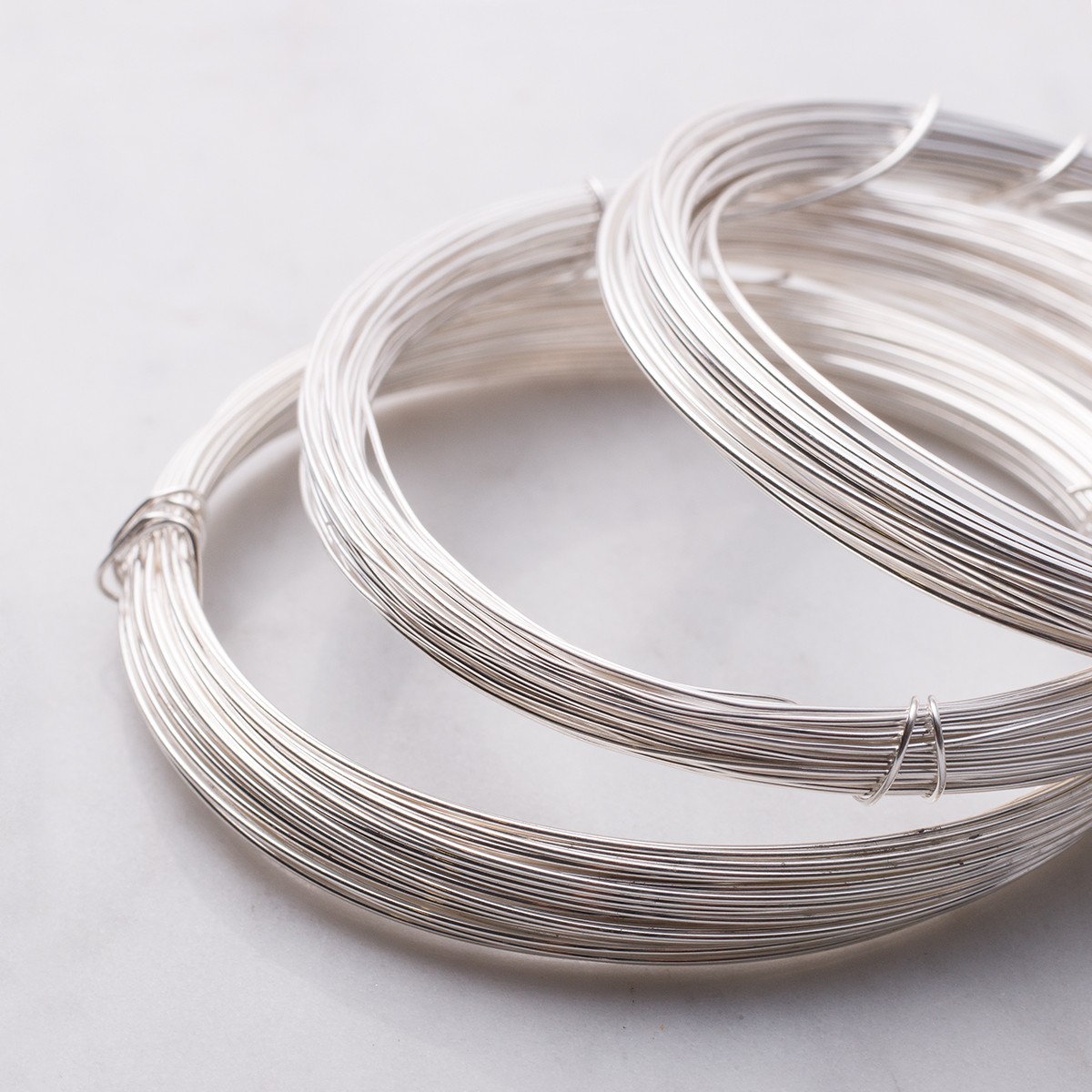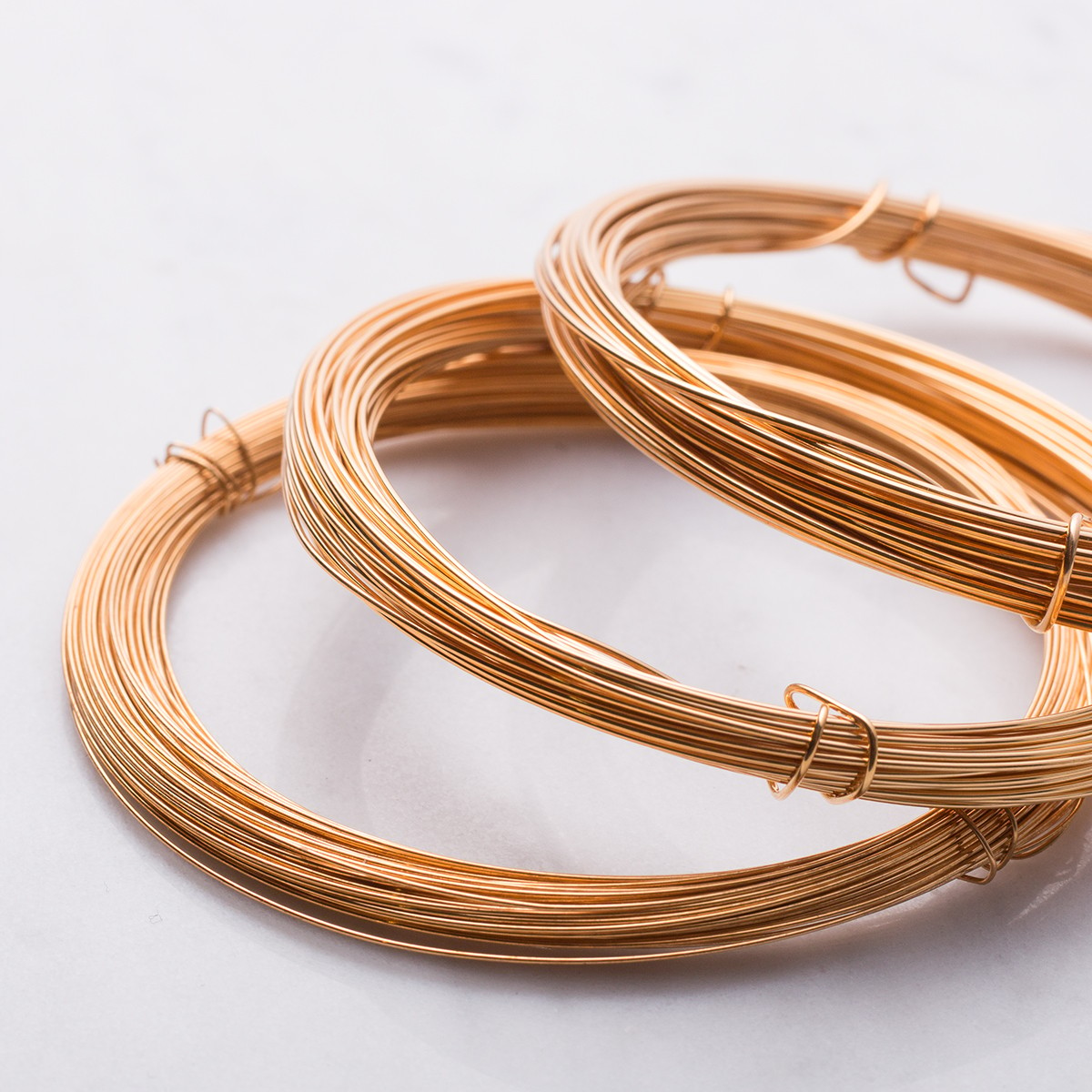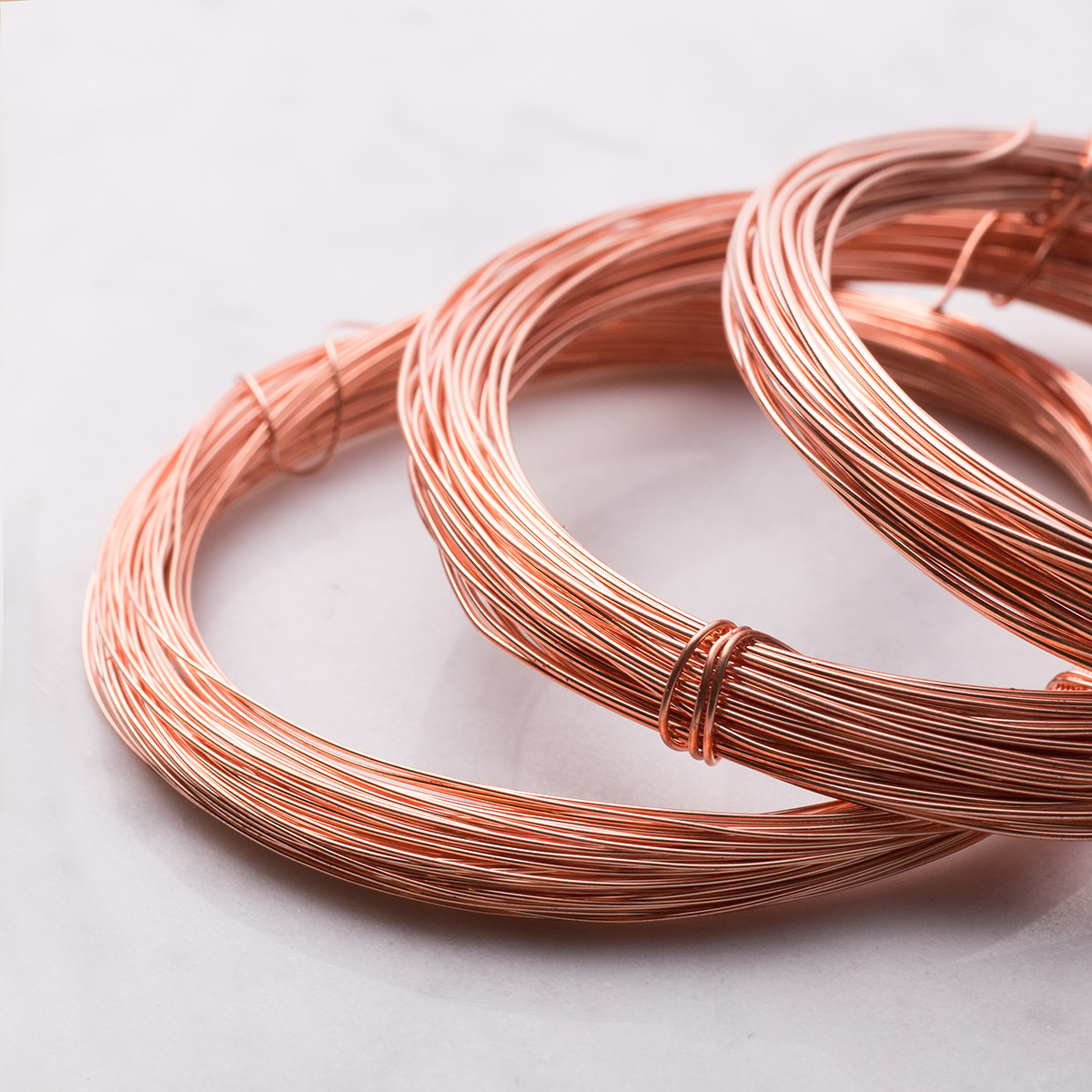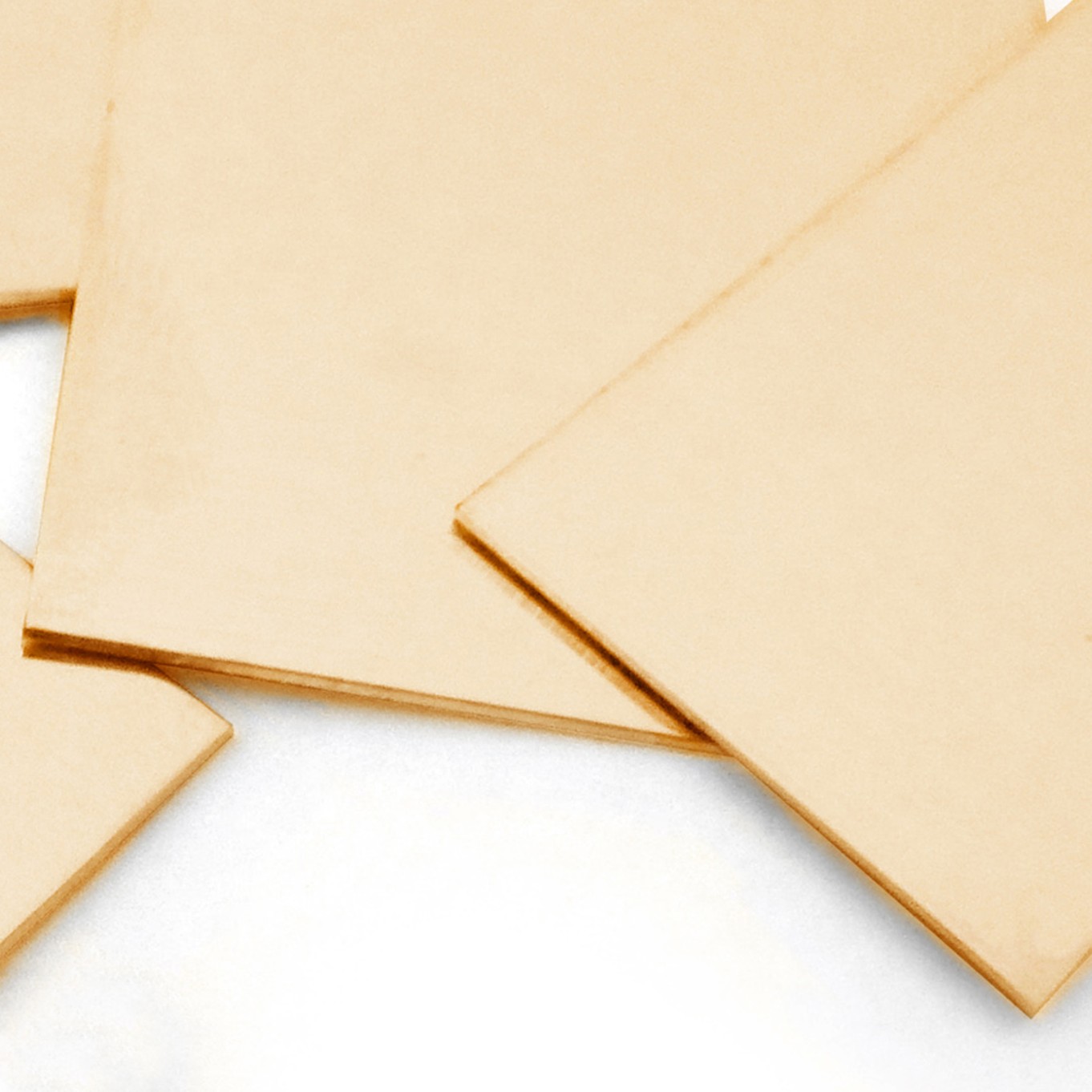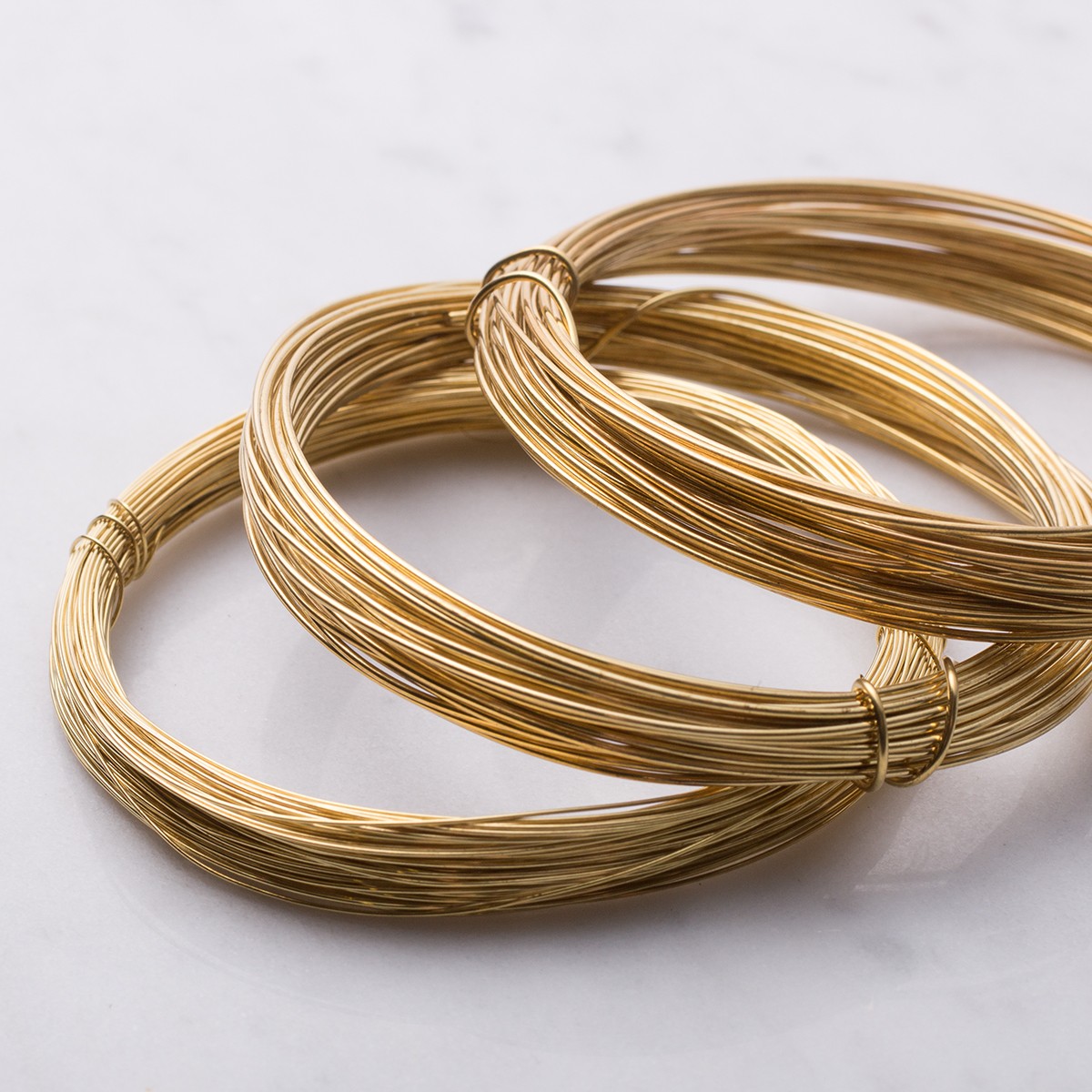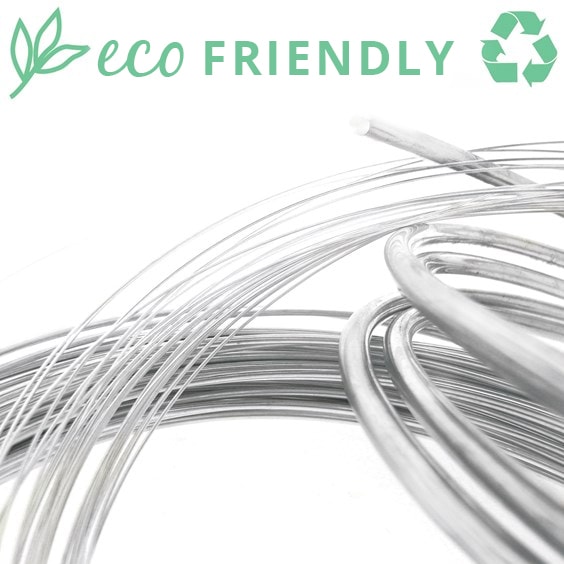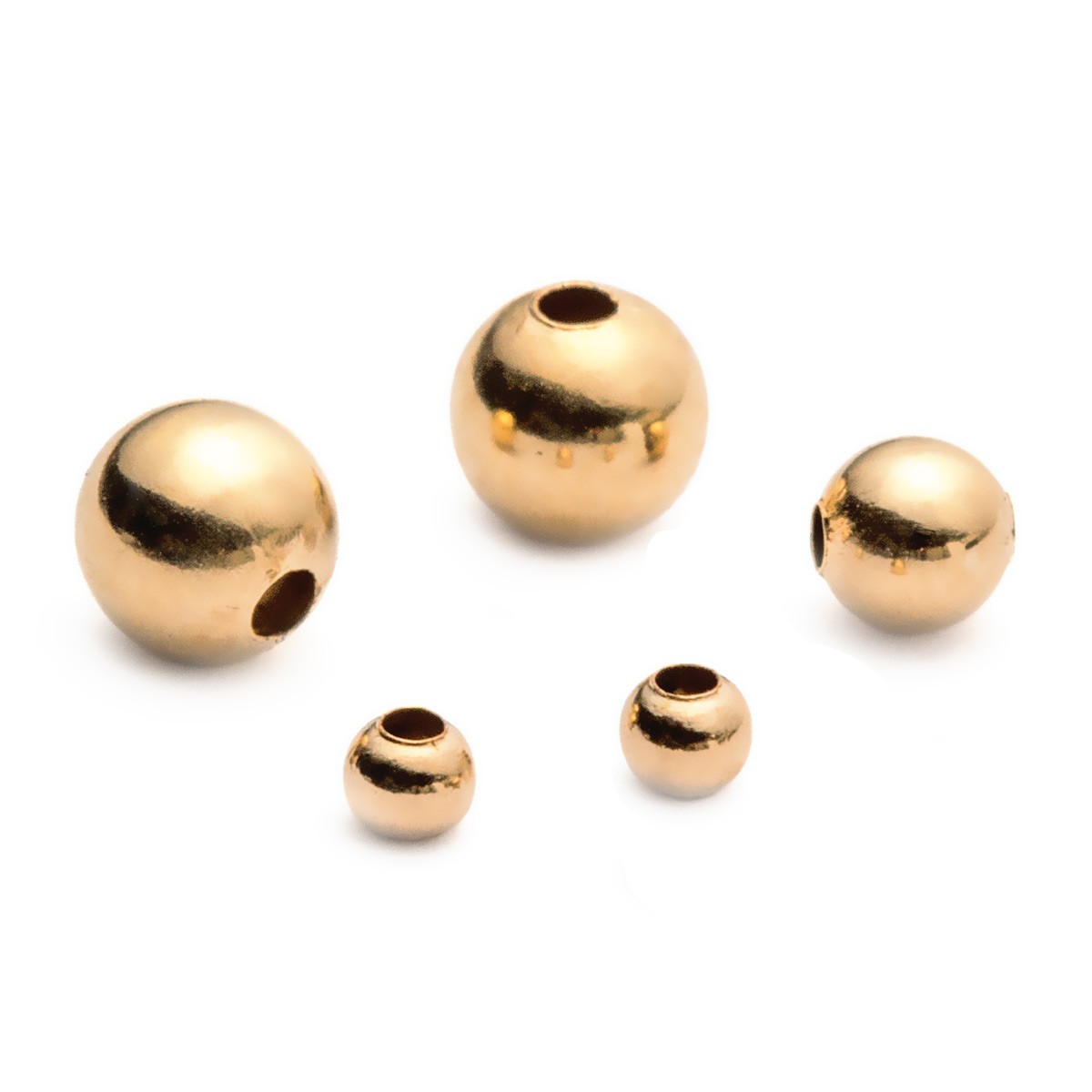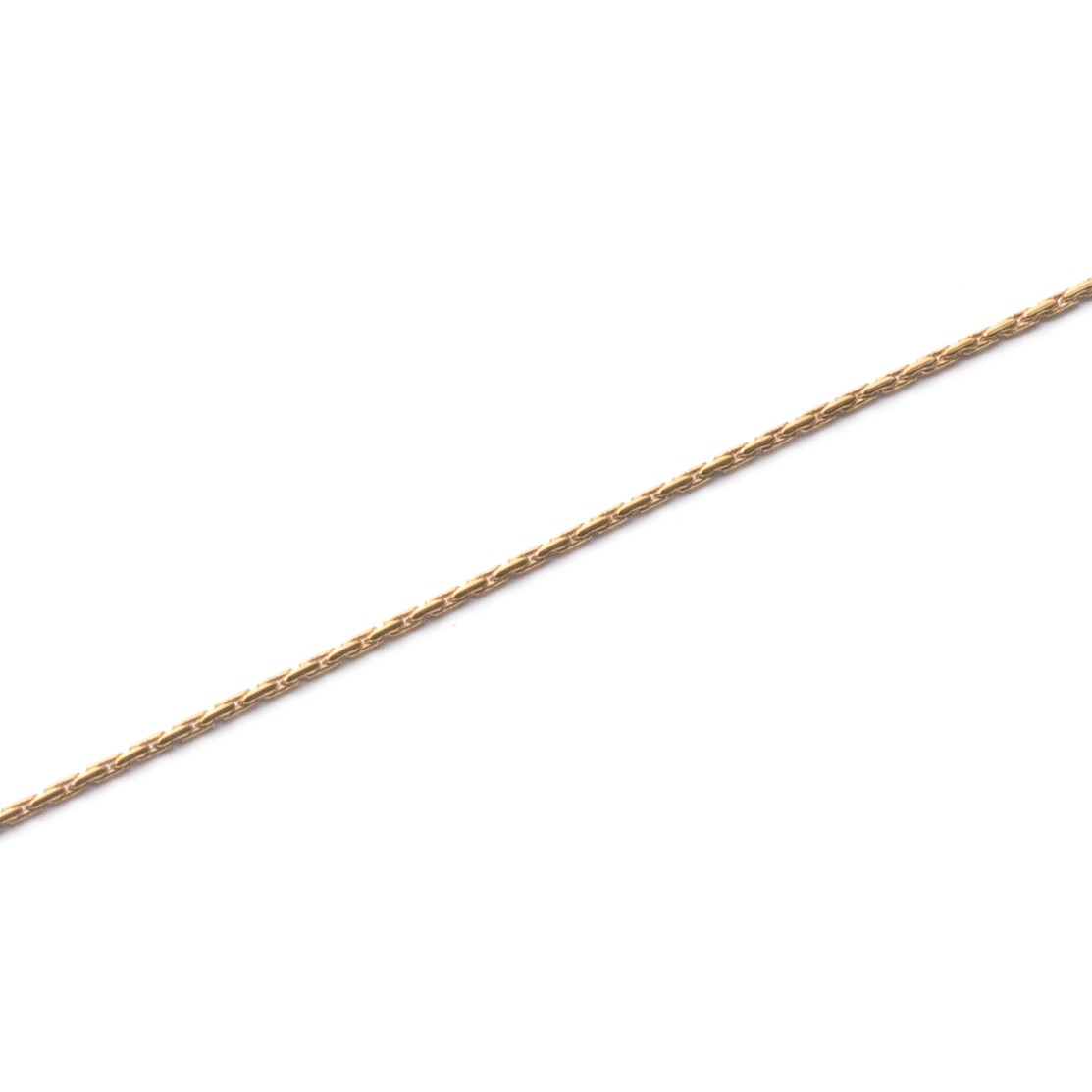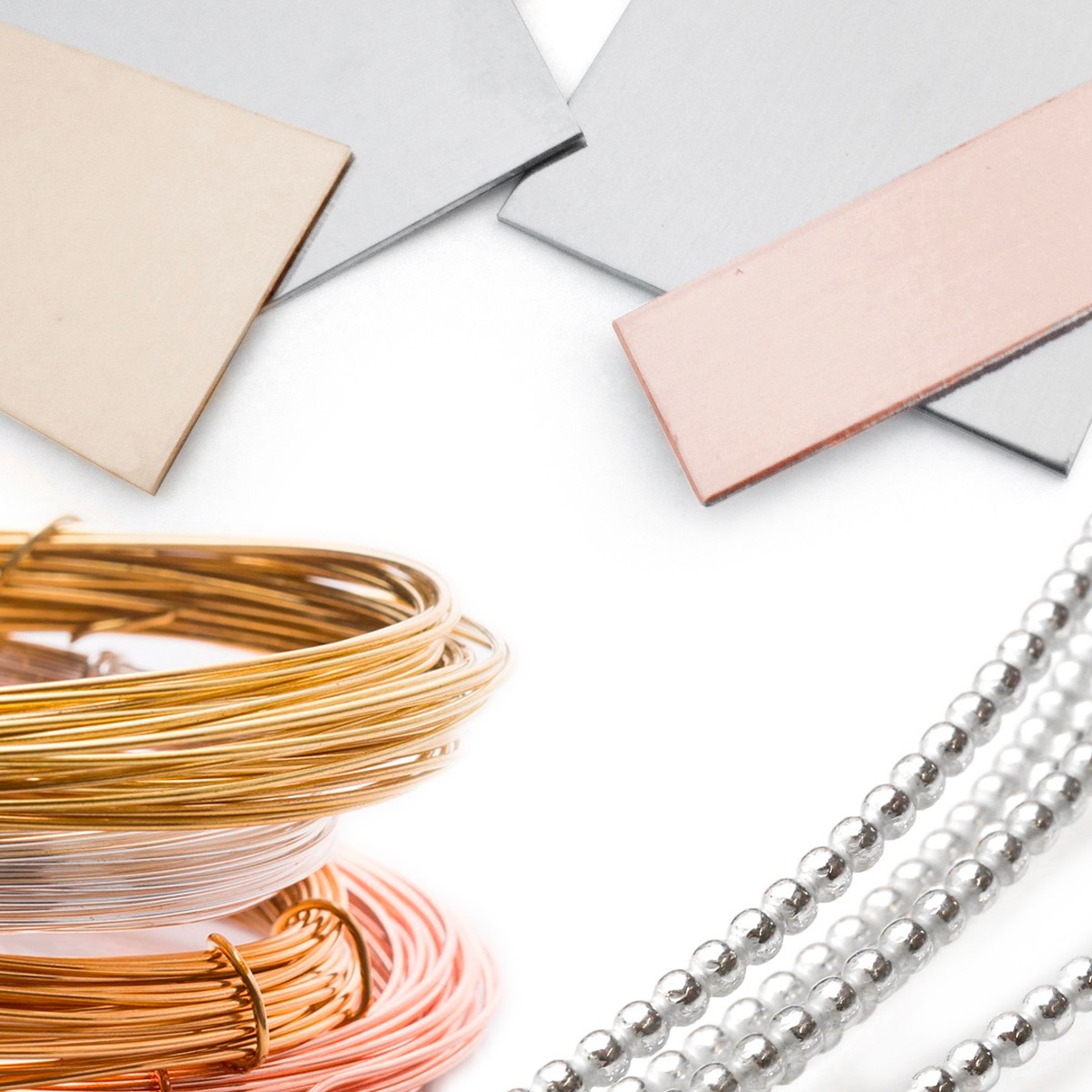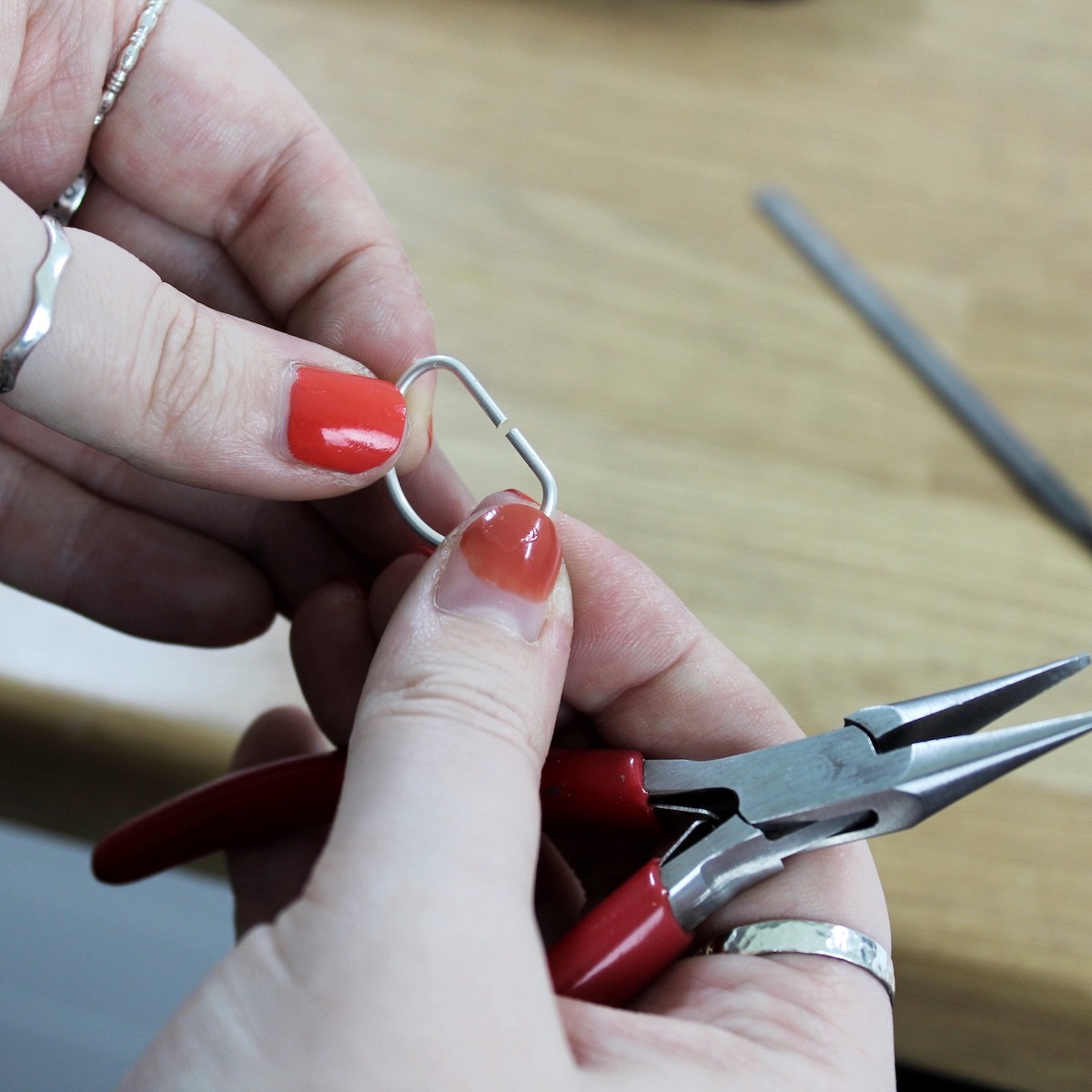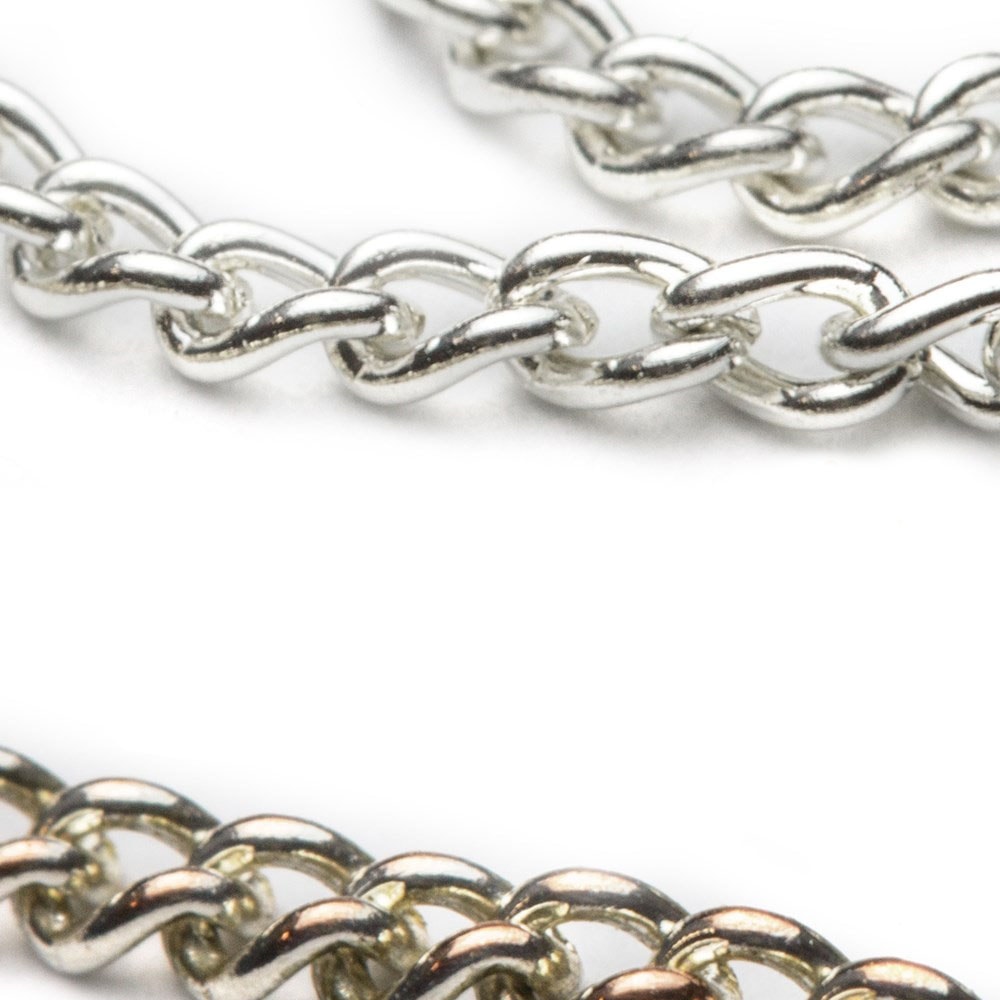Your Guide To Metals For Jewellery Making
When getting started in jewellery making, choosing metal wire and sheet can seem like a tricky task but you'll be much more confident once you understand the options available.
In this advice page, we share with you an overview of the most popular metals used in jewellery making. You will find the most affordable and recommended metals for practising metalsmithing as well as learning the difference between plated, filled and solid metals.
Plated Metals: An Affordable Option & Great For Beginners
Silver and gold plated metal is a popular choice for jewellery making beginners as it is an affordable option due to the small percentage of silver and gold present.
Plated metal has a base metal such as copper, brass or steel which has been dipped into a bath of electroplating solution, in this solution there will also be lump of solid gold or sterling silver. An electric current is sent into the bath of solution and a thin layer of the precious metal is deposited onto the base metal. This creates a thin layer of gold or silver on the base metal.
It's important to note, that unlike the other metals on this page plated metal cannot be soldered as the process will remove the plated finish. Plated metal wire therefore is mainly suitable for wire-wrapped designs and creating components.
Using plated metal in your designs is a great way to practice jewellery making if you're on a budget and not concerned about the durability of your design. Although plated metals are a great affordable option, due to the thin layer of plating it will rub off with time and wear, revealing the base metal beneath.
Shop Plated Wire With Kernowcraft
Our range of silver plated and 9ct gold plated wire both have a copper core, available in a range of diameters for your jewellery making needs. This wire is great for wire wrapping and creating wire components.
Discover Affordable Metals - Great For Practising
If you're at the start of your jewellery making journey, we always recommend practising and experimenting on copper and brass metals as they are an affordable option.
Copper
Copper is an affordable and malleable metal, so it's super easy to manipulate and create interesting designs with, which is why it's often recommended at the start of your jewellery making journey. You'll usually find that if you attend a workshop or course, you will begin with copper!
It has a beautiful warm, red colouring which makes it great for adding pattern and using with liver of sulphur to create a patina and to make those textures pop. People also like to wear copper as it is known to have health benefits and alleviate copper deficiency in the body.
Another point to keep in mind is that copper can cause your skin to turn green - this is caused by a natural process where the copper reacts with oxygen in the air. Although this poses no harm, it's not something many people like but it can be prevented with the use of products such as renaissance wax and midas finish seal lacquer.
Gilding Metal Sheet
Gilding metal is a form of brass, made up of copper and zinc. It has a rich, warm golden colour and is a cheaper alternative to sterling silver, making it a popular choice among beginners and students looking to practice their metalsmithing skills.
The composition of the metal is as follows:
Cu (Copper) = 89-91%
Pb (Lead) = 0.05%
Fe (Iron) = 0.1%
Zn (Zinc) = Remainder
Total Impurities = 0.4%
Brass
Brass is a great choice is you're a gold lover, looking for a budget-friendly option. This metal is the closest you're going to get to resembling gold with its yellowish warm tones! Brass is an alloy, consisting of copper and zinc - sometimes nickel can be added to brass too. Just like copper, brass is malleable but it differs slightly in that it's much more durable than copper therefore it's much more likely to last. You'll often find that brass is used in costume jewellery.
Bronze
Bronze is an alloy of multiple metals, primarily consisting of copper, used for thousands of years due to its durability. It has a lovely rich, warm colour similar in shade to rose gold and copper. It is another beginner friendly option for jewellery making plus it's nice and strong meaning your designs will last.
Due to the copper content, it can tarnish quickly and can cause your skin to go green but as we discussed in the sections above, this isn't harmful and can be prevented with the use of products such as renaissance wax and midas finish seal lacquer.
Silver For Jewellery Making: The Most Popular Choice
Silver is a soft, lustrous metal and is the standard quality of most silver jewellery sold in the UK. This metal is popular due to its workability and durability. Pure silver, like pure gold is too soft to make jewellery with, therefore it's mixed with other metals to make it harder.
Sterling Silver
Sterling silver consists of 92.5% pure silver with the remaining 7.5% being made of other alloy metals such as copper or steel, it's harder and more durable than fine silver and can be used for a variety of things. This percentage can change depending on the quality of the sterling silver and the pure silver amount can be slightly less. Sterling silver sheet is sold in a range of thicknesses and can be used to make your own unique jewellery designs.
Eco Friendly
You may see many jewellers sharing that they use eco-friendly silver in their designs but what does this mean? You can purchase Eco-friendly silver which is produced from recycled scrap silver in a totally traceable and fully audited process. It still has all of the same properties as sterling silver and therefore can be used in the exact same way as you would use sterling silver. This is an attractive product for today's eco-aware jewellers who wish to label their goods as being made from recycled metals.
Fine Silver
Fine silver is pure 99.9% silver whereas sterling silver is 92.5% silver with the rest being made up of any alloy metal. Sterling silver has dominated the market and often gets termed just 'silver', fine silver is often used to describe what is actually just pure silver. Fine silver is softer than sterling silver so great for wire wrapping designs, it is also great for working with a flame as due to being slightly purer silver, it will not get fire stain after soldering.
Gold: An Expensive But Desirable Metal
Gold is a desirable and malleable metal, being one of the most precious and expensive metals available. Using pure gold would be too soft for jewellery making, therefore gold is available in different karats and purities. Gold is also available as gold plated, gold filled and vermeil gold so there are plenty of options to choose from for your jewellery designs.
The difference between gold, gold filled, gold vermeil & gold plated
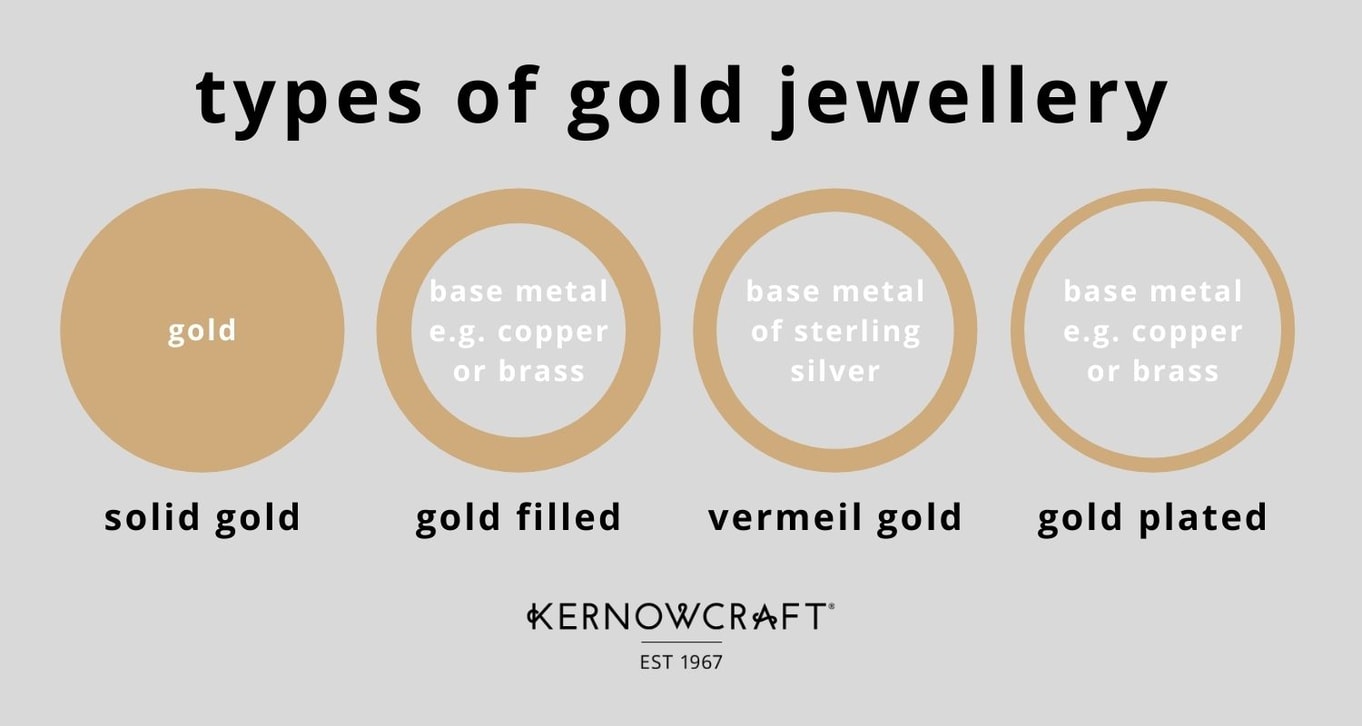
Solid Gold
Pure gold is generally too soft for jewellery making and so other metals are almost always added to it - this is known as alloy. Alloy helps to add strength and colour. Different metals can be used as alloy and depending on which one is used will depend on the final colour of the gold.
The purity of gold is indicated by its carat number...
24 carat gold: As pure as you can get for jewellery making, made up of 99.7-99.9% pure gold.
18 carat gold: Contains 75% of real gold and 25% of another metal which could be white metals to create white gold or copper to create rose gold.
14 carat gold: Contains 58.3% pure gold and 42.7% of another metal. This has a warm yellow colour and is more durable than gold of a higher carat.
9 carat gold: Contains 37.5% pure gold and 63.5% of another metal. This is the most affordable option for jewellery making and is a light yellow colour.
Gold Filled/Rolled Gold
Gold filled metal is also known as rolled gold. This is metal that has been made with a cheaper and more durable base metal which is usually sterling silver, brass or copper. This base metal is then covered with sheets of gold using a mechanical bonding process. This process helps to make gold metal more available and affordable for the jewellery making market.
Gold filled items will have a thick coat of gold that is 5% or 1/20 of the total weight of the metal item. Gold filled metal is a more expensive and is of higher quality than gold plated items as it has a thicker layer of gold and the process is normally done with 14 carat gold.
You can use gold filled metals for high quality designs as it is very durable and with reasonable care it will not peel or flake. It should also last as long as solid 14k gold jewellery. It is also safe for most people with sensitive skin.
Gold Vermeil
Gold vermeil, pronounced vermay is sterling silver that has been gold plated. Vermeil have a thicker coating of gold than plated items do, often up to 50% thicker. Vermeil must use at least 10 carat gold (most of our vermeil has been plated with 22-24 carat gold which makes it good quality.)
Vermeil is a good choice for people who get allergies to base metals of plated items such a copper and brass, due to the core always being sterling silver.
Due to the use of both sterling silver and gold, vermeil is more expensive than both plated and filled metals.
At Kernowcraft, many of our gold vermeil products have been treated with a protective e-coating to increase their durability, protecting their lustre and colour. This invisible coating makes them much more durable against wear and tarnishing than many other vermeil or plated items.
Mokume Gane: For Pattern Lovers
Mokume Gane
Mokume Gane is a metal sheet made of approximately 25 alternating layers of sterling silver and copper sheet, hand worked to reveal wonderful patterns.
The name is Japanese for 'wood grain' which represents the wonderful swirling patterns that are made up of the contrasting copper and silver.
You can cut, polish and solder this metal exactly as you would with silver and copper - plus you can use sterling silver solder with this metal.
Kernowcraft is your destination for gemstones and jewellery making
Shop Metal
Choose from our wide range of metal wire and sheet for all your jewellery making needs, available in a range of diameters and cut to your requirements.
Follow Tutorials
Find more advice pages and step by step projects on a range of jewellery making areas, from learning basic techniques, wire wrapping, stone setting and metalsmithing.
How To Protect Your Designs & Prevent Tarnish
Tarnishing is a natural process where metal reacts with oxygen and other chemicals known as oxidisation. It won't cause harm to your jewellery however it will make the metal look dull and often result in a black coating on the metal.
The tarnishing process can be slowed down by applying products such as renaissance wax and midas finish seal lacquer featured below, both creating a barrier on your jewellery designs. You will also find a range of products to remove tarnish on our website, including cleaning cloths, Town Talk Silver dip and even store-cupboard supplies which will clean up your jewellery and make them sparkle again.
Read our advice page on how to clean and prevent tarnished jewellery.
Also in this section:
- How To Start Jewellery Making
- How To Make Jewellery At Home
- Choosing A Jewellers Workbench
- 12 Basic Tools For Jewellery Making Beginners
- What Is A Cabochon And Faceted Stone?
- Your Guide To Metals For Jewellery Making
- Your Guide To Jewellery Findings
- Types Of Chain For Jewellery Making & Necklet Chain Length Guide
- CM to Inches For Chain Length Conversions
- Jewellery Making Tools For Cutting Metal Wire & Sheet
- A Quick Guide to Jewellery Making Hammers
- The Pliers You Need For Jewellery Making
- The Jewellery Pliers Set For Beginners
- What Are Parallel Pliers For Jewellery Making?
- How To Open And Close Jump Rings For Jewellery Making
- Types Of Earring Findings For Jewellery Making
- How To Make Earrings For Beginners
- Easy Ways To Customise Hoop Earrings
- How To Make Earwires
- 2 Ways To Make Wire Earrings
- How To Make Your Own Balled Head Pins For Earrings
- 7 Ways To Fasten A Necklace or Bracelet
- How To Make An Easy Charm Necklace
- Easy Ways To Make Charm Jewellery
- Sea Glass Jewellery Making Projects For Beginners
- How To Make A Ring: 5 Beginner Projects
- Beginner Jewellery Making Projects Using Glue
- Choosing Glue For Jewellery Making & Top Tips
- How To Use Devcon Epoxy Glue For Jewellery Making
- Time Saving Jewellery Making Tools & Supplies
- How To Make A Ring Smaller With A Ring Size Adjuster
- How To Use A Safety Chain
- How To Tighten & Loosen Earring Backs
- Everything You Need To Repair Broken Jewellery At Home

